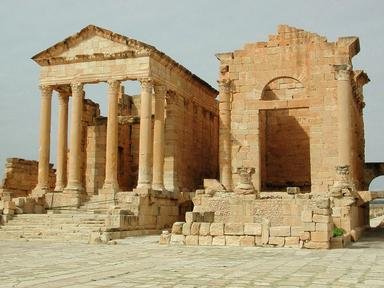Quiz Answer Key and Fun Facts
1. In 1662, Grand Duke Ferdinand III brought camels from North Africa to work on his agricultural estates in Tuscany. Meanwhile in Africa, the camel had been bred for centuries, appearing in early cave paintings in Eritrea. In what country of the Horn of Africa, home to over 7 million camels, is the animal believed to have originated?
2. Queen's Lane Coffee House, the oldest establishment of its kind in Europe, opened in 1654 in Oxford, England. Meanwhile in Africa, people continued to drink coffee, as they had done before introducing it to the Ottoman Turks who introduced it to Europeans. In what African country did the coffee plant originate?
3. In the Republic of Venice in 17th century Italy, Bartolomeo Christofori began building on the technology of the harpsichord and clavichord to develop the pianoforte, our modern piano. Meanwhile in Africa, people were trading what dark wood that would be used to make the piano keys we use to play sharps and flats?
4. In the 17th century, European seafaring nations competed for the trade goods of the East Indies and Asia, circumventing land routes dominated by the Ottoman Turks. Meanwhile along the Swahili Coast, Africans were dealing with incursions from both Muslim and Christian empires. Which European nation, the first to exploit the spice trade and explore the East African shores, recaptured Fort Jesus off the coast of Kenya from the Sultan of Mombasa in 1632?
5. In Europe of the 17th century, French Protestants were persecuted, many escaping to the Netherlands. Meanwhile in Africa, on the last day of December 1687, a community of these Huguenots arrived at the Cape of Good Hope to settle as farmers. In the 17th century the Dutch East India Company also imported slaves from West Africa and Madagascar.
6. In the 17th century in Europe, inventors developed a new technology, called the cementation process, for incorporating carbon into iron to cast steel. Meanwhile in Africa, iron smelting had developed independently of other continents from at least 1500 B.C. and is thought to have spread throughout the lands south of the Sahara through Bantu migrations. Where did African iron smelters find clay that was particularly suited to line their furnaces?
7. In 1663, a new denomination of gold coin was minted in England, bearing a depiction of an elephant, the emblem of the Royal African Company, which came to be associated with the Atlantic slave trade. Meanwhile in Africa, gold was being mined and men, women, and children bought and sold. What was the 17th Century name for the region, also called the Gold Coast, that gave its name to the coin?
8. In the 17th century, Europeans were learning how to facet diamonds by cleaving, sawing, grinding, and polishing - acquiring the stones by sailing around Africa's Cape of Good Hope to India. Meanwhile in Africa, diamonds would lie hidden for another two centuries, but another crystal was highly valued. What essential part of the human diet was mined in the sabkhas north of Timbuktu in Mali and traded as the equivalent of gold in other parts of Africa?
9. In 1603, Queen Elizabeth I died after an eventful forty-five year reign, and in 1689, a queen was again on the throne of England, as Mary II began a joint reign with her husband William III. Meanwhile in West Africa, what female figures, called Iyobas, wielded great political power and influence in the Kingdom of Benin and other cultures?
10. During the 17th century, Europeans kidnapped thousands of men, women, and children from Africa. Meanwhile, European monarchs sent diplomatic missions to strong men like Sultan Moulay Ismail ibn Sharif, ruler of Morocco and parts of present-day Algeria and Mauritania, trying to stem attacks on European ships and shorelines and to redeem hundreds of white slaves. What name is usually given to the privateers sponsored by the Ottoman Turks and North African sultans?
Source: Author
nannywoo
This quiz was reviewed by FunTrivia editor
bloomsby before going online.
Any errors found in FunTrivia content are routinely corrected through our feedback system.

